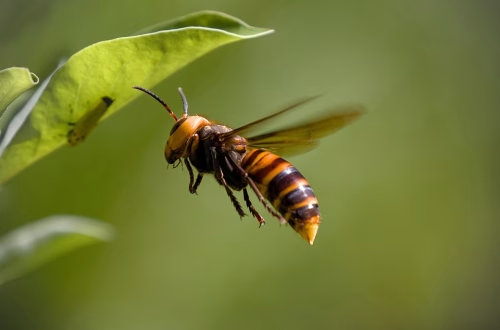Article Summary
Seasonal pest prevention tips are essential for homeowners, businesses, and property managers to maintain a pest-free environment year-round. This article explores effective strategies to combat pests during different seasons, addressing common issues like infestations, property damage, and health risks. By understanding state and federal pest control laws, readers can ensure compliance while protecting their spaces. Implementing these tips not only safeguards your property but also promotes a healthier living and working environment.
What This Means for You
- Proactive pest management can save you from costly repairs and health hazards.
- Seasonal pest prevention tips include sealing entry points, maintaining cleanliness, and using eco-friendly solutions.
- Stay informed about state-specific regulations, such as California’s strict pesticide laws, to avoid legal issues.
- Expect increased pest activity during seasonal transitions, so plan ahead to mitigate risks.
Seasonal Pest Prevention Tips: A Year-Round Guide to Keeping Your Property Pest-Free
Pests are a year-round problem, but their activity often peaks during specific seasons. By understanding seasonal pest prevention tips, you can protect your home or business from infestations, property damage, and health risks. This guide provides actionable strategies tailored to each season, ensuring you stay ahead of the curve.
Spring: The Season of Renewal and Pest Activity
Spring is a time of renewal, but it’s also when pests like ants, termites, and rodents become more active. **Sealing entry points** is crucial during this season. Inspect your property for cracks, gaps, and holes, and use caulk or weatherstripping to seal them. According to the Environmental Protection Agency (EPA), this simple step can prevent pests from entering your home.
Additionally, **remove standing water** from your yard, as it attracts mosquitoes and other pests. Trim overgrown vegetation and store firewood at least 20 feet away from your home to deter termites and rodents.
Summer: Peak Pest Season
Summer is when pests like mosquitoes, flies, and cockroaches thrive. **Maintain cleanliness** by regularly disposing of garbage, cleaning spills, and storing food in airtight containers. The Centers for Disease Control and Prevention (CDC) emphasizes the importance of eliminating food sources to reduce pest activity.
Consider using **eco-friendly pest control methods**, such as diatomaceous earth or essential oil-based repellents, to minimize chemical exposure. If you live in states like Florida or Texas, where mosquito-borne diseases are prevalent, install screens on windows and doors for added protection.
Fall: Preparing for Winter Invaders
As temperatures drop, pests like rodents, spiders, and stink bugs seek shelter indoors. **Inspect and clean gutters** to prevent water buildup, which can attract pests. Seal gaps around windows, doors, and utility lines to block entry points.
Store seasonal items like holiday decorations in plastic bins rather than cardboard boxes, which pests can easily infiltrate. In colder states like New York, **schedule a professional pest inspection** to identify and address potential issues before winter sets in.
Winter: Keeping Pests at Bay
While pest activity may decrease in winter, rodents and cockroaches can still pose a threat. **Keep your home warm and dry** to deter pests, as they are attracted to moisture and warmth. Regularly inspect basements, attics, and crawl spaces for signs of infestation.
If you use pesticides, ensure compliance with federal laws like the Federal Insecticide, Fungicide, and Rodenticide Act (FIFRA). In states like California, where pesticide regulations are strict, opt for licensed professionals to handle pest control.
State-Specific Considerations
Pest control laws vary by state, so it’s essential to stay informed. For example, California’s Department of Pesticide Regulation enforces strict guidelines on pesticide use, while Texas has specific regulations for mosquito control. Always check local laws before implementing pest control measures.
Conclusion
Seasonal pest prevention tips are your first line of defense against unwanted invaders. By taking proactive steps and staying informed about regulations, you can protect your property and health year-round. Ready to take action? Contact a licensed pest control professional today to assess your needs and implement a tailored plan.
People Also Ask About
- What are the most common pests in summer? Mosquitoes, flies, and cockroaches are the most active during summer.
- How can I prevent termites in spring? Seal entry points, remove standing water, and store firewood away from your home.
- Are eco-friendly pest control methods effective? Yes, methods like diatomaceous earth and essential oils can be effective and safer for the environment.
- What should I do if I find rodents in winter? Seal entry points, set traps, and consider hiring a professional for severe infestations.
- Are there state-specific pest control laws? Yes, states like California and Texas have unique regulations for pesticide use and pest management.
Expert Opinion
“Seasonal pest prevention is not just about reacting to infestations; it’s about proactive measures to stop pests before they become a problem,” says a pest control expert. “Using eco-friendly solutions and staying compliant with local laws ensures both safety and effectiveness. Remember, prevention is always better than cure.”
Related Key Terms
- Seasonal pest prevention tips
- Eco-friendly pest control methods
- State-specific pest control laws
- Winter pest prevention strategies
- Summer mosquito control tips
- California pesticide regulations
- Professional pest inspection services
*Featured image sourced by Pixabay.com





